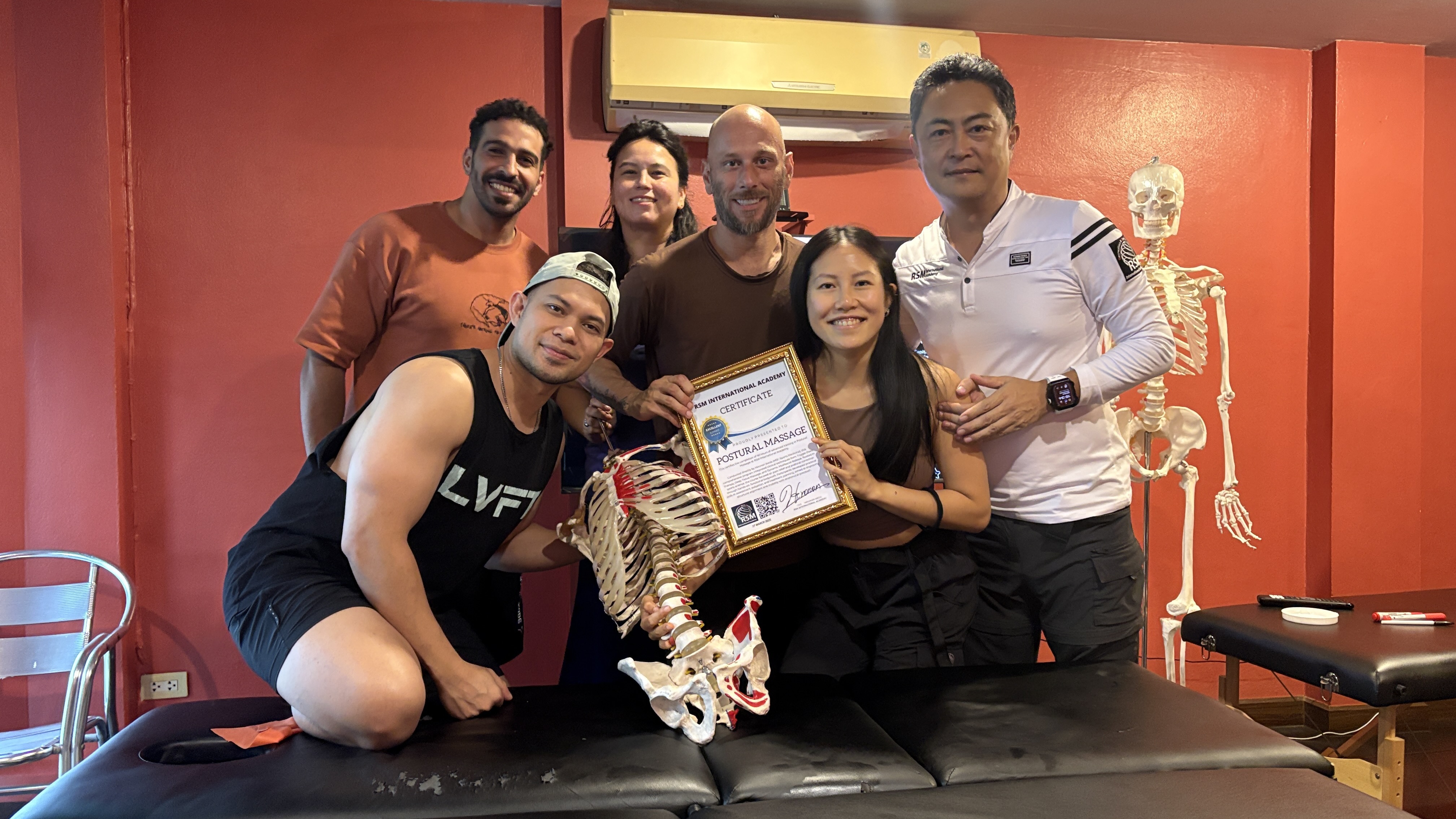Bridging General Medicine and Sports Medicine – What I Found at RSM International Academy

I am a medical doctor from Myanmar, currently running a small medical spa in Yangon. My background is in general medicine — we study many fields such as oncology, nephrology, and gastroenterology. I learned anatomy at medical school, but mostly for diagnosing diseases or understanding internal organs. We never really studied how muscles, fascia, joints, and nerves work together in functional movement.
When I decided to look for further education, I found many massage schools in Thailand. But honestly, most of them looked like tourist training programs — very short, too simple, and without any scientific explanation. I knew this type of school would not help me grow. I wanted something serious, something that made sense for someone with a medical background.
Then I found RSM International Academy, led by Mr. Hironori Ikeda, who holds a Master’s degree in Sports Medicine. From his website, I immediately felt this was not a person doing massage as a side job or as a tourist course. The structure of his program, the scientific content, and even the way he described palpation and biomechanics — everything showed deep academic knowledge. My instinct told me: this is the only school I should go to.
Since Chiang Mai is near Myanmar, I joined a two-week course — Trigger Point Therapy for Pain Relief and Deep Tissue Massage for Postural Correction. From the first day, I was impressed. Mr. Ikeda’s way of teaching connected anatomy, biomechanics, and movement assessment in a way that even most medical universities do not.
We learned detailed joint assessments like SI joint evaluation, Patrick’s test, and even practiced LVLA and HVLA concepts with real manual guidance. His explanation of kinetic chains, fascial tension, and neural pathways helped me see the body in a totally different way.
For me, as a doctor, the most surprising part was the palpation training. In medical school, we are trained to palpate organs or lymph nodes — but never to feel fascia, muscle tone, or the subtle restriction in a joint. I realized this is exactly what we miss in medicine: the art of touch supported by science.
In our class, there were physiotherapists from Germany and Malaysia, and massage therapists from different backgrounds. Some had less than one year of experience, but under Mr. Ikeda’s guidance, everyone could understand and apply the techniques. The environment was serious, focused, and full of respect for learning.
After finishing at RSM, I joined a three-day course at another local school just to compare. Chiang Mai Massage School It felt like a tourist class — no real anatomy, no logic, no system. That experience made me appreciate RSM even more.
Even as a doctor, I can say this: RSM International Academy teaches what medical schools do not — how to understand the living body through movement, touch, Chiang Mai Massage School and real functional science. It bridges the gap between textbook medicine and the actual human experience.
I plan to return to Massage School Thailand Chiang Mai for the Professional Sports Medicine Massage Program, and I want my spa staff to study under Mr. Ikeda as well.
For any medical professional, physiotherapist, or serious therapist — this is not a typical massage school.
This is where General Medicine truly meets Sports Medicine.